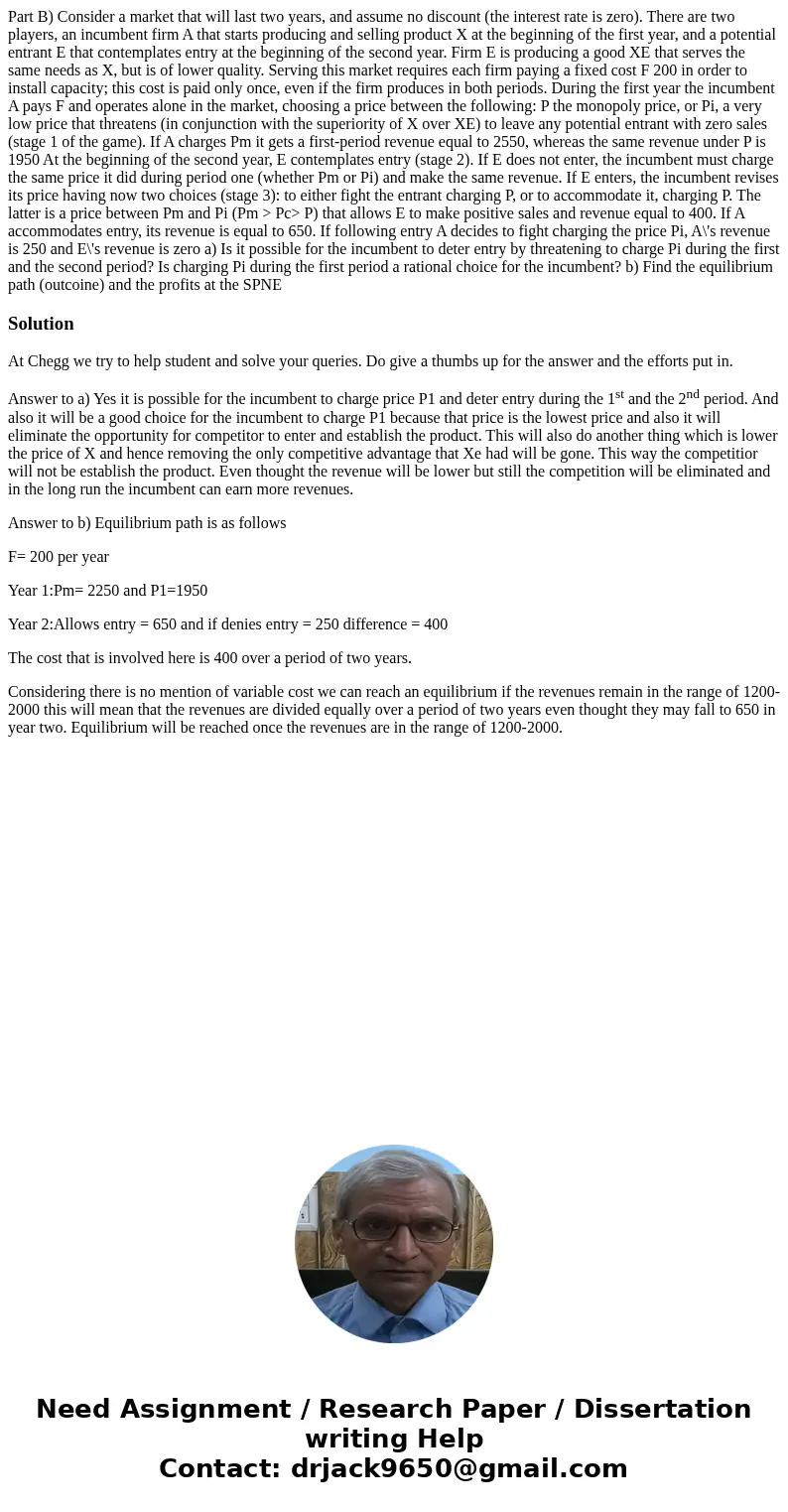Part B) Consider a market that will last two years, and assume no discount (the interest rate is zero). There are two players, an incumbent firm A that starts producing and selling product X at the beginning of the first year, and a potential entrant E that contemplates entry at the beginning of the second year. Firm E is producing a good XE that serves the same needs as X, but is of lower quality. Serving this market requires each firm paying a fixed cost F 200 in order to install capacity; this cost is paid only once, even if the firm produces in both periods. During the first year the incumbent A pays F and operates alone in the market, choosing a price between the following: P the monopoly price, or Pi, a very low price that threatens (in conjunction with the superiority of X over XE) to leave any potential entrant with zero sales (stage 1 of the game). If A charges Pm it gets a first-period revenue equal to 2550, whereas the same revenue under P is 1950 At the beginning of the second year, E contemplates entry (stage 2). If E does not enter, the incumbent must charge the same price it did during period one (whether Pm or Pi) and make the same revenue. If E enters, the incumbent revises its price having now two choices (stage 3): to either fight the entrant charging P, or to accommodate it, charging P. The latter is a price between Pm and Pi (Pm > Pc> P) that allows E to make positive sales and revenue equal to 400. If A accommodates entry, its revenue is equal to 650. If following entry A decides to fight charging the price Pi, A\'s revenue is 250 and E\'s revenue is zero a) Is it possible for the incumbent to deter entry by threatening to charge Pi during the first and the second period? Is charging Pi during the first period a rational choice for the incumbent? b) Find the equilibrium path (outcoine) and the profits at the SPNE
At Chegg we try to help student and solve your queries. Do give a thumbs up for the answer and the efforts put in.
Answer to a) Yes it is possible for the incumbent to charge price P1 and deter entry during the 1st and the 2nd period. And also it will be a good choice for the incumbent to charge P1 because that price is the lowest price and also it will eliminate the opportunity for competitor to enter and establish the product. This will also do another thing which is lower the price of X and hence removing the only competitive advantage that Xe had will be gone. This way the competitior will not be establish the product. Even thought the revenue will be lower but still the competition will be eliminated and in the long run the incumbent can earn more revenues.
Answer to b) Equilibrium path is as follows
F= 200 per year
Year 1:Pm= 2250 and P1=1950
Year 2:Allows entry = 650 and if denies entry = 250 difference = 400
The cost that is involved here is 400 over a period of two years.
Considering there is no mention of variable cost we can reach an equilibrium if the revenues remain in the range of 1200-2000 this will mean that the revenues are divided equally over a period of two years even thought they may fall to 650 in year two. Equilibrium will be reached once the revenues are in the range of 1200-2000.

 Homework Sourse
Homework Sourse